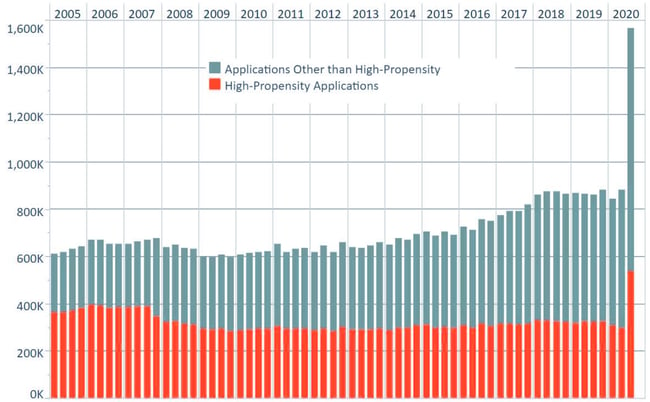Dec 8, 2020
| 5 min read
Digital Insights Newsletter: December 2020

2020 will unquestionably go down as the most disruptive year on the lives of the vast majority of people alive today, and as the final weeks wind to a close it’s worth taking stock of what’s changed, what’s resilient and what’s coming.
An Unprecedented Downturn
2020 was defined by the SARS-COV2 Coronavirus. As of December 6, 2020, there have been around 67 million cases of coronavirus worldwide, impacting more than 210 countries and territories, with the United States confirming around 20% of all global cases. While global real Gross Domestic Product (GDP) grew by 2.9% in 2019, global real GDP growth is forecast to decline by 4.5% in 2020. The impact has been felt across industries, in schools, government, financial markets and societies at large. Global revenue for the travel and tourism industry declined an estimated 42% in 2020 from the prior year, while industrial production declined between 3-8% in advanced economies. The speed and scope of the downturn, caused largely by imposed lockdowns and travel restrictions, caught the world by surprise – and while many expected a return to “normal” pre-COVID, the new realities are here to stay.
Exposing weaknesses – and opportunities
The sudden disruptions revealed many weaknesses in the networks and systems that support our daily lives. Supply chain resilience became a top priority as shortages of critical goods and transport restrictions forced suppliers, distributors and vendors to accelerate contingency plans. Businesses adapted to the new work from home/distributed workforce model, and found many advantages (and cost savings) from the decentralized approach.
The pandemic became a catalyst to accelerate digital transformation across the economy. On-premise retailers, restaurants and other businesses have embraced hybrid online/in-person strategies to minimize risk and smooth the customer experience. Digitally savvy and online only businesses saw their businesses prosper with demand channeled to low-friction options. The rush to develop a vaccine spurred multiple efforts from the likes of Pfizer, Moderna and AstraZenica, with the first publicly available vaccines being delivered in the UK in early December.
V-Shaped Recovery Underway
The financial markets reflect the underlying resilience of the economy, which at least in the U.S. was exhibiting record strength through early 2020. With the massive infusions of fiscal stimulus and sudden pullbacks of spending by workers stuck at home, demand for houses, autos and other goods (such as electric guitars) boomed in 2020.
Following the US election in which Joe Biden appears the likely winner, markets reacted positively to the likelihood that legislative gridlock and/or additional stimulus would boost the economy even further, driving record gains in major market indices. As of December 7, the Dow Jones is up nearly 10%, the Nasdaq up nearly 12% and the S&P 500 up 10%, all well ahead of levels following the 2016 election. The markets evince strong optimism in a robust economic recovery, and economic forecasts are brightening.
2021: Risks Remain, but New Beginnings Await
The challenges of social distancing remain as the pandemic’s toll continues to build entering the cold winter months in the Northern Hemisphere, but the availability of vaccines and therapeutics provides hope through the next leg of caution. As we take stock of the changes and lessons of 2020, we adjust to the “newest normal” with innovative flair. It’s not surprising that the engines of growth are being put in place, with new business applications surging to double the typical run rate in the US in the 3rd quarter.
Quarterly Business Application - As f 2020 Q3


Momenta delivers digital innovation, growth and leadership across energy, manufacturing, smart spaces and supply chain. As deep Digital Industry Practitioners, we can help you grow in ways no other company can through one-stop advisory, M&A, executive search and venture capital services. Feel free to schedule a call to explore your company's digital potential.